Inca empire: 10 stories to understand its origin and fall
The Inca empire, also called the empire of the four “suyos” or Tahuantinsuyo (in Quechua language) originated in the 12th century and came to an end around 1532 with the Spanish invasion or Spanish conquest. Throughout its more than three hundred years of history, historical events occurred that marked a before and after, such as: the migration to the Cusco valley, the great victory over the Chanca people, the creation of the empire by Pachacutec, the capture of Emperor Atahualpa and the fall of Manco Inca, which marked the end of the Inca government. Learn ten historical facts to better understand the genesis and end of this civilization!
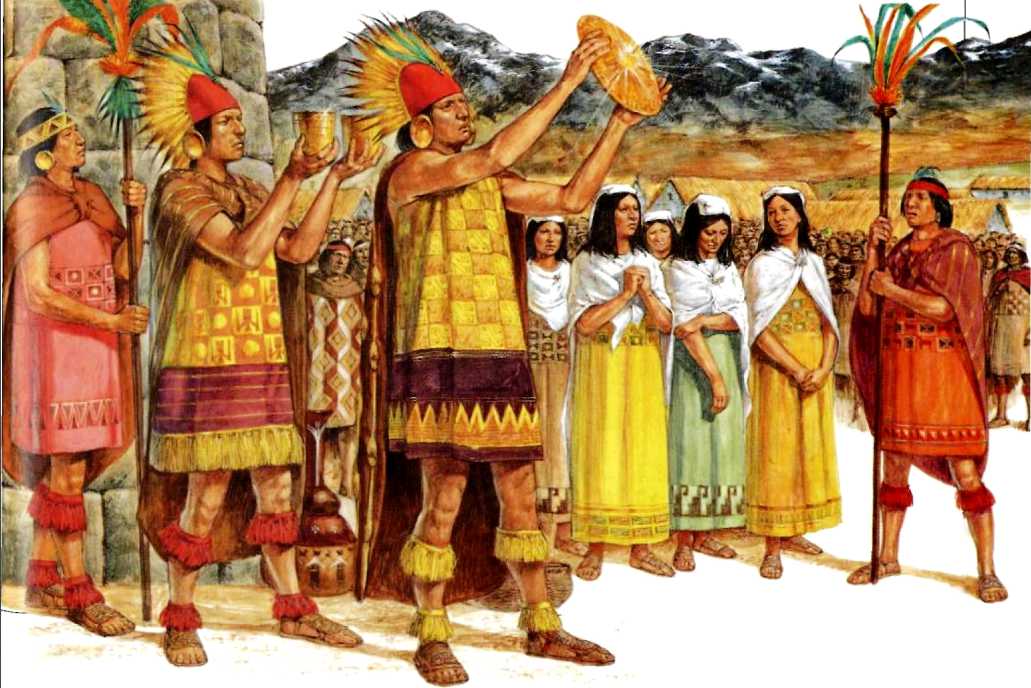
Content
- Migration from the altiplano to the Cusco valley
- The mythical government of Manco Capac
- The war against the Chancas
- Pachacutec and the creation of the Tahuantinsuyo empire
- Tupac Yupanqui and the conquering expeditions
- The civil war: Huáscar vs Atahualpa
- The capture, rescue and death of Atahualpa
- The Spanish invasion of Cusco
- The rebellious Incas of Vilcabamba
- The Spanish conquest
Migration from the altiplano to the Cusco valley
- The history of Cusco was short as it expanded over more than 300 years. Its origin, according to archaeological studies and, above all, to oral tradition, began with the great migration from the altiplano to the Cusco valley in the 12th century.
- The legend of Manco Capac and Mama Ocllo tells that from Lake Titicaca were born the spouses and siblings Manco Capac and Mama Ocllo who, by order of their father the sun god (Inti) migrated to the valley of Cusco where they founded the great empire of the Incas.
- Historians point out that this event occurred due to the threat to which the Incas were exposed after the expansion of the Aymara peoples in the Altiplano region (around Lake Titicaca).
- As a result of this great migration, Manco Capac founded the Inca nation, which would last more than three hundred years and become the largest empire in South America.
The mythical government of Manco Capac
- The figure of Manco Capac as the great founder of the Cusco nation is closer to myth. The oral tradition points to him as the great leader and statesman who managed to reach the valley of Cusco and lay the foundations for the first curacazgo of Cusco.
- Manco Capac was a man of great knowledge, who managed to strengthen alliances with the Quechua peoples settled in the valley of Cusco. It was he who organized the local families and taught them how to cultivate the land, how to build their palaces and temples. It is estimated that he ruled Cusco since the early twelfth century and died very young in approximately 1230 AD.
- In addition to Manco Capac, the figure of his sister and wife Mama Ocllo, who, according to Inca chronicles and legends, accompanied him on the journey from the highlands to the Cusco Valley, stands out. In addition, it was she who taught the women of the Quechua ethnic groups the art of textiles, pottery and more.
- Likewise, to the figure of Manco Capac is attributed the creation of the first Inca palaces and temples in the city of Cusco. Mainly the famous Inticancha (temple of the sun), which, under the rule of Emperor Pachacutec, was renamed Coricancha.
- After Manco Capac’s rule, others followed: Sinchi Roca (1088-1117), Lloque Yupanqui (1117-1145), Mayta Capac (1145-1176), Capac Yupanqui (1176- 1228), Inca Roca (1228-1277) and Yahuar Huaca Yupanqui (1277-1298). However, the mythical rule of Manco Capac is considered vital in the history and origins of the Incas.
The war against the Chancas
- The Chancas, like the Incas, were a warrior ethnic group that at the beginning of the 15th century made their way to conquer new territories in the southern region of Peru.
- The Chancas vied with the Incas for control of large tracts of territory and war was inevitable. Thus, in 1438, the Chancas were led by the fearsome Astoy Huaraca who organized an expedition to conquer Cusco.
- In Cusco, the ruler Huiracocha feared defeat and fled to his palace of Yucay in the present Sacred Valley of the Incas.
- Faced with the inevitable defeat, the young noble warrior Cusi Yupanqui organizes an army to defend Cusco. In addition, he obtains important alliances with neighboring towns, who see him as a great leader in whom to trust. Thus, in 1438 the Incas resisted the Chanca invasion and then set out to conquer them in the famous battle of Yahuarpampa.
- Finally, the Incas managed to defeat the Chancas after a bloody battle where thousands of people died on both sides. This battle even has legends and myths that support such an important event for the Incas.
- After the victory, the brave young Cusi Yupanqui is named as the new Inca governor, henceforth called Emperor Pachacutec, leader of the great empire of the Incas, the Tahuantinsuyo.
Pachacutec and the creation of the Tahuantinsuyo empire
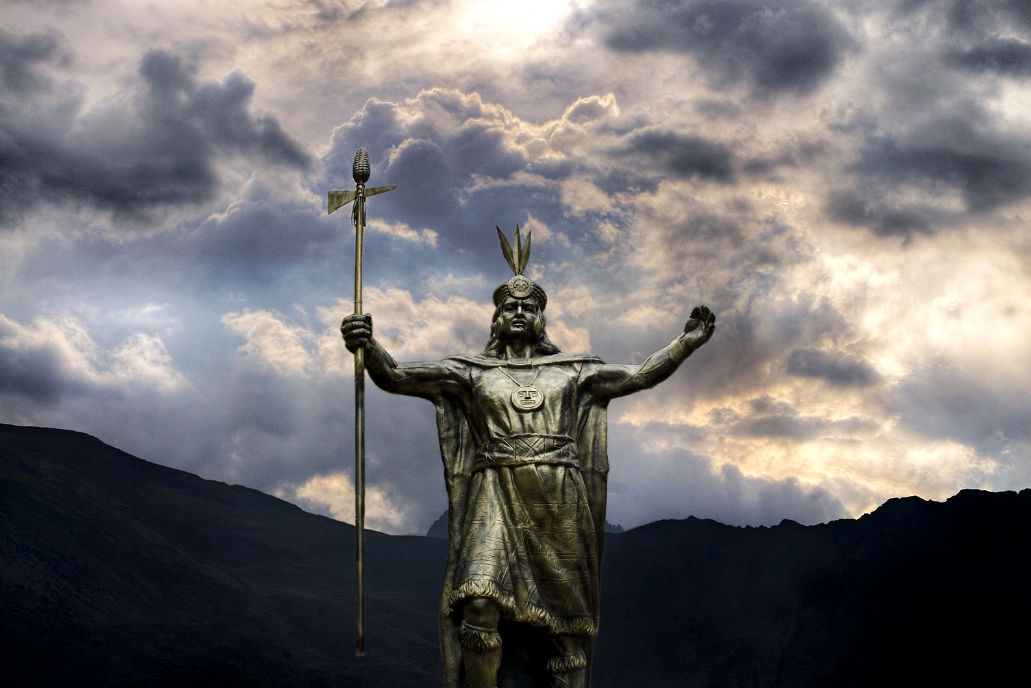
- The figure of Pachacutec is perhaps the most important in the history of the Inca empire. It was he who achieved the mythical victory against the Chancas. Likewise, it was he who organized a new course in the curacazgo of Cusco turning it into a great empire called ’empire of the four of them’ or Tahuantinsuyo in Quechua language.
- After the notable expansion before the victory of the chancas, Pachacútec organized new expeditions to annex more territories. He reformed the organization of the nascent empire with the teaching of Quechua in the new conquered towns. In addition, for better communication, he ordered the construction of hundreds of kilometers of the so-called qhapac ñan or Inca royal roads.
- It was Pachacutec who also ordered the construction of imposing palaces and temples, such as Machu Picchu, a beautiful citadel that would represent the power of the Incas in the new eastern territories called Antisuyo.
- Pachacutec also ordered the modification of the Inticancha in Coricancha. He organized, under the command of his son Túpac Yupanqui and his main generals, new expeditions in all directions of the empire.
- In summary, Pachacutec was a great statesman who achieved the reorganization of the new Inca empire, which a few years later, would become the largest in South America.
Tupac Yupanqui and the conquering expeditions
- Tupac Yupanqui was the son and successor of Pachacutec in the government and organization of the new empire of the Incas (Tahuantinsuyo empire).
- From a very young age he was trained to be an emperor. His father Pachacutec sent him on distant expeditions as far as Quito (Ecuador) in the north or the Maule River (Chile) in the south. He was even sent by his father to unprecedented expeditions such as the sea voyage to the Polynesian islands (and even, according to legends, to territories in Oceania).
- His reign was short-lived, only from 1471 to 1493 A.D. As emperor he achieved important conquests such as the northern regions of Chachapoyas, Paita and Tumbes. Also, continuing north, the territories of Palta and Cañar.
- Likewise, Tupac Yupanqui managed to conquer some territories in the Amazon jungle, such as Gran Paititi (the current region of Madre de Dios in Peru). In addition, he managed to appease a rebellion in the Altiplano region.
- During his first years as emperor, Túpac Yupanqui accompanied Pachacutec in the government of the empire. Upon the death of his father in 1471, he took the government on his own.
- Through all his expeditions, under the command of Tupac Yupanqui, the Inca empire reached its greatest territorial extension, occupying large areas of present-day Peru, Bolivia, Ecuador, Colombia, Argentina and Chile.
The civil war: Huáscar vs Atahualpa
- Huascar and Atahualpa were sons of Emperor Huayna Capac, who died in 1524, leaving the former as his successor. Huáscar centered his government in the city of Cusco, capital of the Inca empire. Meanwhile, his brother Atahualpa was sent to the northern region of Quito (Ecuador) for new military expeditions in charge of a large army.
- Atahualpa managed a powerful army in Quito, which caused the fear of his brother Huáscar. This is how he ordered the assassination of Atahualpa who, aware of his brother’s plans, started a civil war.
- In 1533, by order of Atahualpa, the Inca Huascar was assassinated in the town of Mollebamba.
- The civil war between Huascar and Atahualpa was bloody. It lasted more than four years, between 1529 and 1533 AD. As a consequence, around one million people died. This civil war was one of the reasons why the Spaniards succeeded in conquering the mighty Inca empire a few years later.
The capture, rescue and death of Atahualpa
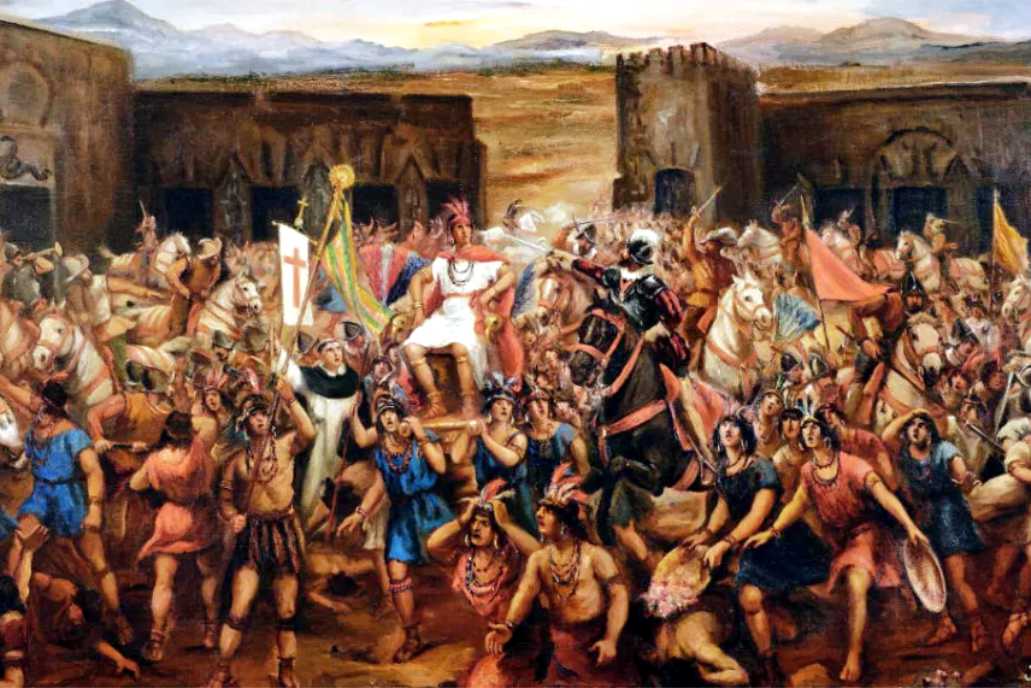
- In 1532, while the Inca empire suffered a great civil war between the army of Huáscar and Atahualpa, the Spaniards entered the Inca empire from the north. That same year, on November 16, 1532, Atahualpa was captured by the Spanish in the city of Cajamarca.
- Atahualpa was taken prisoner in Cajamarca. At the hands of Francisco Pizarro he offered a price for his ransom. This consisted of two rooms full of silver and one of gold as far as his hand could reach.
- Even though he was a prisoner, fearing that the Spaniards would support his brother Huáscar, he ordered his brother’s assassination. Meanwhile, from all corners of the Inca empire, thousands of pieces of gold and silver are collected, considered one of the greatest treasures in the history of mankind (the gold alone could have weighed 6 tons).
- After paying for his ransom, Francisco Pizarro ordered his death because of the fear that the power of the Inca represented. Thus, on July 26, 1533, the emperor Atahualpa was assassinated by the Spaniards who were already on their way to Cusco together with a large army of aboriginal settlers who were enemies of the Incas.
The Spanish invasion of Cusco
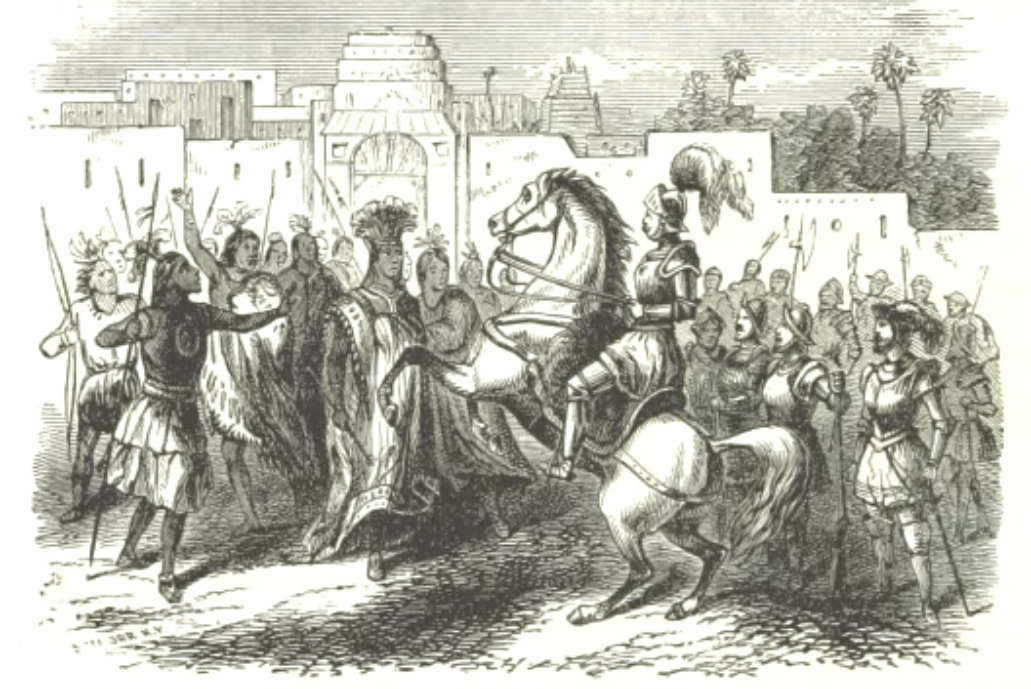
- In the 16th century, because of the assassination of Huáscar and Atahualpa, the Inca government of Cusco was in turmoil. Francisco Pizarro and the Spaniards, despite the atrocities and robberies, were not frowned upon because they had assassinated Atahualpa, a figure frowned upon by the Incas of Cusco.
- Thus, in November 1533, the Spaniards entered the city of Cusco almost without any resistance. Francisco Pizarro named Túpac Huallpa, the brother of Huáscar and Atahualpa, as the successor Inca.
- However, upon the arrival of the Spaniards to Cusco. And, before the looting of the temples and the greed of the Spaniards for gold and silver; the successor of Tupac Huallpa (he was poisoned by the followers of Atahualpa) called Manco Inca, realized the true interests of the Spaniards organizing a great rebellion.
- Manco Inca organized a great rebellion with the partial support of the Inca nobility. Some Inca nobles supported Pizarro with the promise of maintaining their hierarchy and noble rights. However, this was not the case.
- Finally, the Spaniards and the Inca rebels under the command of Manco Inca clashed at various points in the city of Cusco in 1536. One of these confrontations occurred in Sacsayhuaman, which suffered severe damage.
- Finally, Manco Inca’s Inca army fled to the Amazon jungle, beginning a period of constant battles known as the ‘Inca rebels of Vilcabamba’.
The rebellious Incas of Vilcabamba
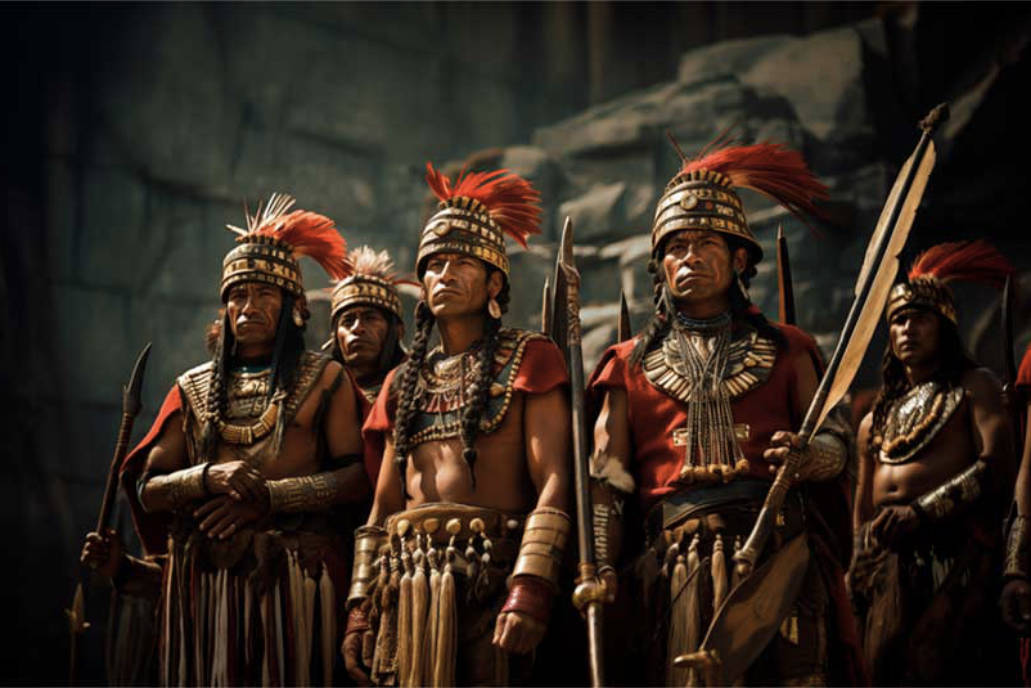
- In 1536, confrontations began between the Spanish and the rebel Incas of Vilcabamba under the command of Manco Inca. The battles were mainly in historical scenarios such as Chinchero, Ollantaytambo and, finally, in the Amazon jungle where the Incas built their last stronghold in Vilcabamba, a place of difficult access for the Spaniards.
- From Vilcabamba the rebel Incas fought and resisted the already powerful Spanish army. Throughout almost 40 years, negotiations took place between Spaniards and Inca rebels. Manco Inca was assassinated by a follower of Almagro. In addition, Sayri Túpac reached an agreement with the Spaniards in exchange for personal benefits, but was also assassinated.
- Finally, in 1572, after confrontations, agreements and disagreements, the last rebel Inca of Vilcabamba, called Túpac Amaru I, was captured and killed by orders of the then viceroy Francisco de Toledo.
The Spanish conquest
- The death of Tupac Amaru I meant the end of the Inca resistance in Vilcabamba, the end of the Inca legacy. However, several years ago, the Spanish imposed a new model of government called Viceroyalty.
- The Inca resistance in Vilcabamba did not pose a risk to the new viceroyalty of Peru, already under the command of the fifth viceroy Francisco de Toledo.
- The Inca nobles, who relied on the promise of the Spanish to maintain their privileges, saw how their lands were not respected. Many acquired a Spanish name and had to adapt to the new model of government in the viceroyalty of Peru.
- However, despite the Spanish conquest and hundreds of years, many customs, traditions and even part of the Inca religiosity is still in force in many regions of Cusco and Peru.
By Machupicchu Terra – Last updated, October 10, 2024